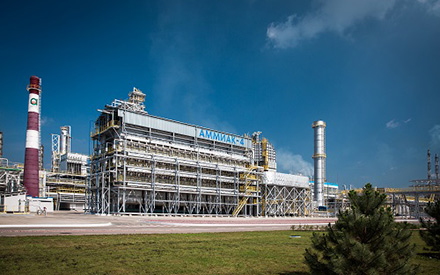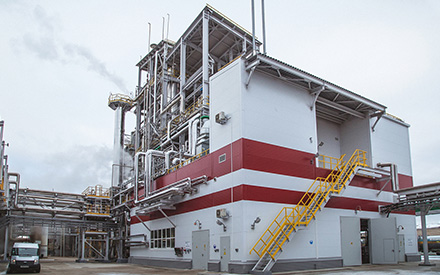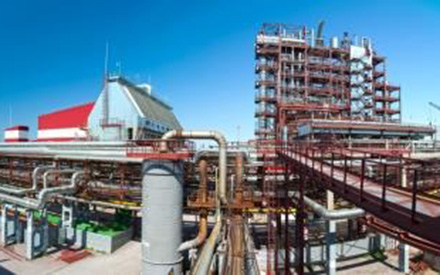In 2017, Acron Group presented an updated development strategy through 2025 designed to make maximum use of existing production potential.
The new development programme includes a number of highly efficient projects at Acron and Dorogobuzh with relatively small CAPEX and payback periods. The projects can be combined for flexibility in the investment programme, offering Acron Group greater control of its debt burden. In its new development strategy, Acron Group also focuses on the needs of its customers, expanding the product portfolio and further developing its distribution segment.
In 2018, the Group resolved to launch active construction at the Talitsky potash mine. This project will complete Acron Group’s vertical integration for the three key elements – nitrogen, phosphorus, and potassium – and will make Acron one of the most competitive NPK producers globally.
The strategy through 2025 is expected to:
- Boost capacity and output and expand the product portfolio
- Commence own potash production and complete vertical integration
- Considerably develop distribution and enhance penetration in key markets
In 2018, as part of its distribution development strategy Acron Group commenced supplying UAN to European markets through its new trading company, Acron France SAS. In 2018, the Group also established offices in Brazil and Argentina.
Projects in Progress
Acron and Dorogobuzh
| Project |
Annual Output Increase |
| Acron | |
| COMPLETED PROJECTS | |
| Capacity increase at Urea-5 unit |
Urea — 50,000 t |
| Construction of Urea-6 unit |
Urea — 210,000 t |
| Construction of three nitric acid units and equipment upgrades at AN units | AN — 500,000 t |
| Construction of urea granulation unit | Granulation — 700,000 t |
| Capacity increase at Ammonia-4 unit | Ammonia — 90,000 t |
| Comprehensive overhaul of Urea-6 unit (Urea-6+ project) | Urea — 520,000 t |
| PROJECTS UNDER CONSTRUCTION | |
|
Construction of calcium nitrate (CN) unit |
CN — 100,000 t |
| Capacity increase at Ammonia-3 unit | Ammonia — 200,000 t |
| Capacity increase at Ammonia-2 unit | Ammonia — 175,000 t |
| Capacity increase at urea units 1-4 and construction of urea granulation unit |
Urea ─ 390,000 t Granulation — 700,000 t |
| Dorogobuzh | |
| COMPLETED PROJECTS | |
| Capacity increase at ammonia unit | Ammonia ─ 130,000 t |
| PROJECTS UNDER IMPLEMENTATION | |
| Nitric acid unit construction and equipment upgrades at AN units | AN — 180,000 t |
Talitsky Mine
In 2008, Acron subsidiary Verkhnekamsk Potash Company (VPC) obtained a licence to explore and develop the Talitsky area of the Verkhnekamsk potassium-magnesium salt deposit in Perm Krai. The project is part of Acron Group’s vertical integration drive to create an independent potassium base for NPK fertilisers.
In 2008-2011, the Company conducted research and geological exploration in the Talitsky area. In 2012, VPC obtained approval from the state expert review board (Glavgosexpertiza) for the first stage of design documentation: shaft construction. In November 2012, VPC obtained construction approval and commenced preparations to construct skip and cage shafts. In 2013, the Company finished drilling freezing holes for subsequent shaft sinking. In 2014, VPC completed assembly of the equipment for the freezing plant, commissioned the administrative building and launched the main step-down substation. In 2015, the Company obtained Glavgosexpertiza approval for the Talitsky mine’s second stage, the underground mine. In 2016, approval was given for the project’s third stage, construction of surface facilities. Additionally, in 2016 the subsoil licence for the Talitsky area was amended to extend the licence term to 2053. In 2018, the Company started shaft sinking. In 2020, VPC completed shaft sinking and final shaft support with cast iron and concrete. The cage shaft is 363 m deep, and the skip shaft reaches to 414 m.
During the St. Petersburg International Economic Forum in 2019, the Russian Ministry of Industry and Trade, the Government of Perm Krai, and Verkhnekamsk Potash Company signed a special investment contract to establish an industrial-scale production facility at the Talitsky area of the Verkhnekamsk potassium-magnesium salt deposit in Perm Krai with an annual capacity of 2 million tons of potassium chloride. Special investment contracts are a new public policy tool designed to encourage investments in Russian industrial production and decrease the risk to investors.
In 2020, Verkhnekamsk Potash Company signed an Investment Protection and Promotion Agreement with the Russian Ministry of Economic Development and the Perm Krai Ministry of Economic Development and Investments.
The Talitsky mine has design capacity of 2.0 mtpa of potassium chloride with further expansion to 2.6 mtpa. Investment in the project to date exceeds USD 2.5 bn (including the cost of the licence).
Completed Projects
Oleniy Ruchey Mine

In 2006, Acron subsidiary North-Western Phosphorous Company (NWPC) obtained a licence to mine the apatite-nepheline ore at the Oleniy Ruchey deposit in Murmansk region. This project is part of Acron Group’s drive to vertically integrate production of the phosphates required for NPK fertilisers.
The large-scale mine project includes an open pit and an underground mine. Mine construction began in 2010 after completion of exploration and design work. In late 2012, the Company started producing apatite concentrate.
In 2013, Oleniy Ruchey delivered all the Group’s phosphate feedstock and started shipping its products to third parties. With extraction of open-pit ore, the mine capacity was 1.2 mtpa of apatite concentrate.
In autumn 2017, NWPC started extracting ore from the underground mine, and it is estimated that further development of the underground mine will gradually increase total apatite concentrate output to 1.5 mtpa by 2023 and subsequently to 2 mtpa. In the beginning of 2018, a new railway branch connecting the mine with the main network was commissioned, which helped reduce the cost of feedstock transportation.
The deposit’s lifetime is estimated at over 50 years.
Total investment in the project will reach USD 1.1 bn.
Ammonia-4 Unit
In 2014, Acron entered the active phase of construction of a new large-capacity ammonia unit. The unit was commissioned in 2016. Its initial design capacity was 700,000 tpa, but in 2018, the unit’s capacity reached 800,000 tpa.

The project is unique because it is the first ammonia unit since the breakup of the Soviet Union constructed by Russian experts without outsourcing foreign workforce and based on design documentation drafted by the Russian design institute Acron Engineering.
The Company invested approximately USD 500 mn in the project.
In 2020, Acron upgraded the Ammonia-4 unit at a cost of USD 34 mn, bringing its capacity to 900,000 tpa.
Three Nitric Acid Units
In 2019-2020, Acron commissioned three new, 135,000-tpa nitric acid units at the Veliky Novgorod site. The project started in 2017, and the general designer was Acron Engineering, an Acron Group subsidiary and design institute. In parallel with this project, the Company upgraded equipment and increased capacity at the AN units, which use nitric acid as feedstock.
The investments totalled USD 58 million.
Urea-6 Unit

In 2018, the Group launched a new 210,000-tpa Urea-6 unit, which was implemented within a year. The general designer was Acron Engineering, an Acron Group subsidiary and design institute.
Investment in the project totalled USD 30 mn.
In 2019-2021, Acron completed a comprehensive overhaul of Urea-6 unit increasing its capacity by 520,000 tpa. The project investments totalled USD 85 million, and the general designer was Acron Engineering. Russian companies and Acron’s repair team manufactured 95% of the equipment.
Urea Granulation Unit
In 2018, Acron began constructing a 700,000-tpa urea granulation unit and commissioned it in 2020. The project was completed independently, without subcontracting an EPC contractor or foreign construction and engineering companies. Acron’s capital construction department and engineering team were responsible for engineering support and construction management. The unit was designed by Acron Engineering (a member of Acron Group).
Project investments totalled USD 29 million.
AS DBT Port Terminal
Construction of a port terminal facility for transshipment of liquid cargo (UAN and ammonia) at the Estonian port of Sillamäe started in 2006.
In 2008, the terminal loaded its first vessel with Acron’s UAN, and the first ammonia was loaded in late 2009.
The terminal has throughput capacity of 1.85 mtpa of UAN and 1.5 mtpa of ammonia. A total of approximately USD 100 mn was invested in the project.
Urea-5 Unit

The Group launched construction of a new 350,000-tpa urea unit (Urea-5) at its Veliky Novgorod site in 2008 and commissioned the unit in 2012. The unit was comprehensively upgraded in 2017–2018. Currently, the unit operates at the capacity of 515,000 tpa.
The Group invested a total of approximately USD 100 mn in this project.
UAN Unit
Acron (Veliky Novgorod) started construction of a new UAN (urea-ammonium nitrate liquid nitrogen fertiliser) unit at its site in 2006 and brought the unit on stream in late 2007.
Initial capacity of 500,000 tpa was increased to 1.7 mtpa in subsequent years. Acron invested a total of approximately USD 27 million in the project.